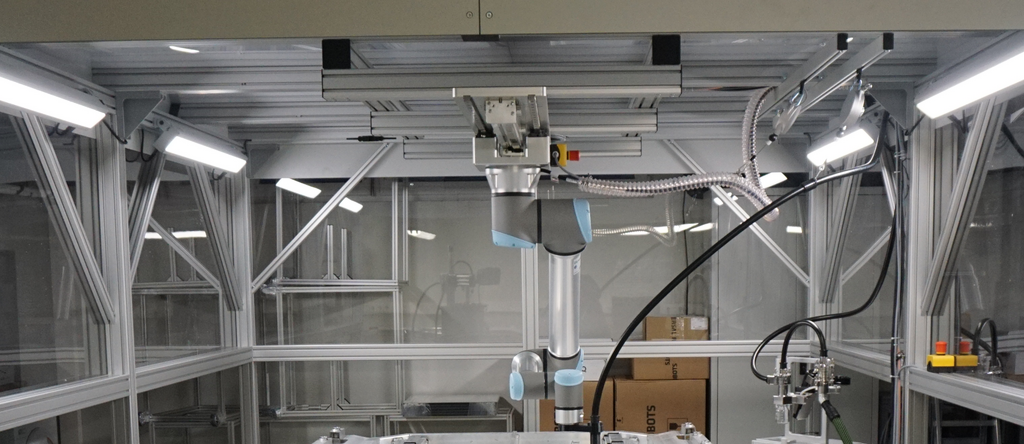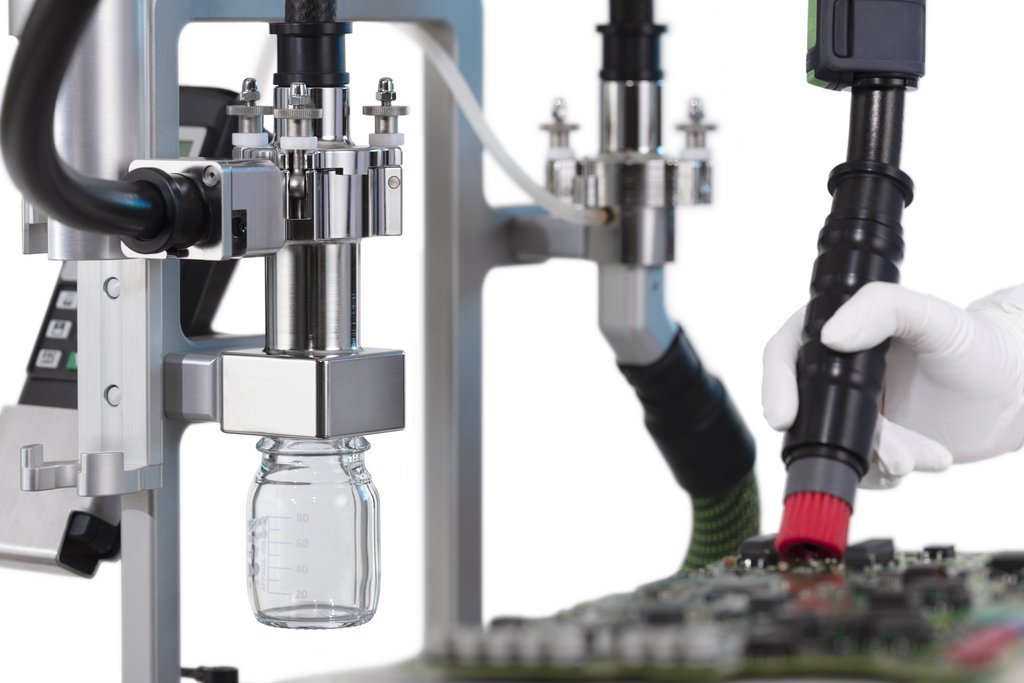Cleanliness inspections by means of suction extraction
referring close to VDA 19.1 (2015) / ISO 16232:2018
Technical cleanliness is increasingly changing from the testing of media-conducting components such as engine and system components to components that are not exposed to liquid media during operation. Increasingly, extraction with liquid test media is unsuitable for cleanliness inspections, as components and coatings, e.g. on printed circuit boards, are sometimes not resistant to liquids, the base material itself absorbs test liquid or is destroyed by it, or high-quality components cannot be used after the inspection. Here, suction extraction by means of air offers decisive advantages and enables the testing of these liquid-sensitive components.
For this suction extraction, the test parameters are worked out and determined in accordance with the qualification test / decay measurement described in VDA 19.1 / ISO 16232:2018 and can be confirmed with the double inspection.
The particle extraction is performed by means of suction with separation of the particles via the cyclone unit in a laboratory bottle. With the secondary extraction, the particles are then transferred by a liquid extraction to a microscopically capable anaysis filter and then passed on for microscopic analysis. Alternatively, if the particle load is relatively low, the separation can also be carried out directly on an analysis filter and then passed directly to microscopic analysis.
Robotic suction extraction
for components up to 2,600 x 4,600 mm

CleanControlling uses a robot-guided suction extraction system developed by CleanControlling, with which components up to a size of 2,600 x 4,600 mm can be inspected. For this purpose, the components are flexibly placed in the closed, walk-in extraction cell with a transport trolley. The exchangeable extraction nozzles are attached to the multi-dimensionally movable robot arm with a large reach. The solid construction of the system in combination with the robot technology ensures repeatable extraction processes and thus extremely reproducible test results.
This laboratory approach is particularly suitable for components of vehicle battery systems that are not intended to come into contact with liquid media or are not suitable for wet extraction due to their dimensions, geometry and end use.
The cleanliness test is carried out in accordance with VDA 19.1 / ISO 16232:2018 and is qualified analogously to these standards for routine testing by means of decay measurement. The microscopic analysis and evaluation corresponds to VDA 19.1 / ISO 16232:2018.
Profile
| Typical industries | Automotive and automotive supply industry (e-mobility, container logistics, electronics) |
|---|---|
| Type of contamination | particles from manufacturing and logistics process |
| Result Microscopy | count per size class from 25 µm particle size, metallically shiny / non-shiny / fibres |
| Result Gravimetry (if requirements exist) | Total mass of extracted particles in mg |
| Test objects | components in the field of e-mobility (battery systems, HV systems, wiring harnesses, electronics, etc.), load carriers (KLT, etc.) |
Further Information
These tests are part of our accreditation, detailed information on the scope of accreditation can be found here.
You can also find detailed information on test procedures and test standards in our Infothek.
If you have any questions, the employees from our sales team will be happy to help you.
Newsletter registration

